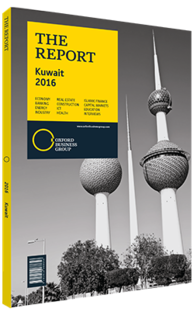Raising passenger numbers and boosting performance of Kuwait Airways
In recent years, airlines based in the GCC have raised a formidable challenge to the former domination of legacy carriers based in North America and Europe. In 2015 carriers in the Middle East saw the strongest traffic growth in the world, according to the Geneva-based International Air Transport Association (IATA), raising their share of global traffic to 14.2% and rising above that of their North American peers’ 13.4%. Kuwait’s sector is at an earlier stage of growth than its neighbours, but recent developments indicate changes are moving forward.
New Terminal
An airport upgrade has long been on the table. In November 2014 the country’s Central Tenders Committee announced that a consortium consisting of Turkey-based Limak İnşaat and Kuwait-based Kharafi National submitted the lowest bid, at KD1.39bn ($4.6bn), for the new terminal. In February 2015, however, the initial tendering process was completely scrapped and a new tender floated.
Then in August 2015, the Limak-Kharafi consortium again submitted the lowest bid, this time at KD1.31bn ($4.3bn). After months of negotiating, the final agreement was signed at the end of May 2016. The first phase of construction is set to boost annual capacity from 7m to 13m passengers, while further phases could increase that number to 25m, according to the Directorate General of Civil Aviation.
State Carrier
While capacity could grow with the expansion of the airport itself, changes are also under way within state-owned Kuwait Airways. The airline has faced an uphill battle for the decades following the Gulf War. While regional giants like Emirates, Qatar Airways and Etihad saw their “global hub” business plans take off, Kuwait Airways was still re-emerging from major service disruptions, damage to its fleet and theft of its physical capital from the Iraqi invasion. Since then Kuwait Airways has posted losses in every year but one. Aware of the challenges the airline faced in 2008, the government proposed privatisation as a way to bring it back to profitability. Initially, the authorities planned to offer a strategic investor 35% of the carrier. At the time, both Kuwait-based private carrier Jazeera Airways and local logistics firm Agility expressed interest in stepping in. In 2013 the government began to restructure the airline in anticipation of privatisation.
Fresh Start
Although privatisation plans did not materialise, the December 2013 appointment of Rasha Al Roumi as Chairperson and CEO, as part of the company’s restructuring, has signalled changes ahead. In February and November 2014, the company concluded leasing agreements with Airbus and Boeing, marking its first fleet upgrades in nearly 20 years. The government, meanwhile, has converted the airline into an independent state-owned entity, which should allow it to avoid some of the bureaucratic stumbling blocks of the past. The government also agreed to float the carrier’s losses and fleet renewal expenses, estimated to be worth $8bn, and to inject another $4bn in capital, Reuters reported in March 2016. Kuwait Airways has also moved to cut costs by reducing redundancies in its staff. As a state-owned entity, the carrier employs a high number of Kuwaiti nationals, for whom jobs are guaranteed by the country’s 1961 constitution. To reduce costs, the airline offered retirement packages that allowed it to prune 1350 jobs from its rosters in 2014 and 2015.
With its conversion to an independent state entity, leadership change, and fleet renewal all under way, there is no doubt that important and much-needed changes are afoot for the beleaguered state carrier. Kuwait Airways’ financials have shown annual improvements from 2012-15, cutting its losses from KD96m ($317.5m) in 2012 to KD28m ($92.1m) in 2015, and still moving in the right direction. “Kuwait Airways has a changed model and I’m sure it will rapidly progress under the leadership,” Akbar Al Baker, Qatar
You have reached the limit of premium articles you can view for free.
Choose from the options below to purchase print or digital editions of our Reports. You can also purchase a website subscription giving you unlimited access to all of our Reports online for 12 months.
If you have already purchased this Report or have a website subscription, please login to continue.

